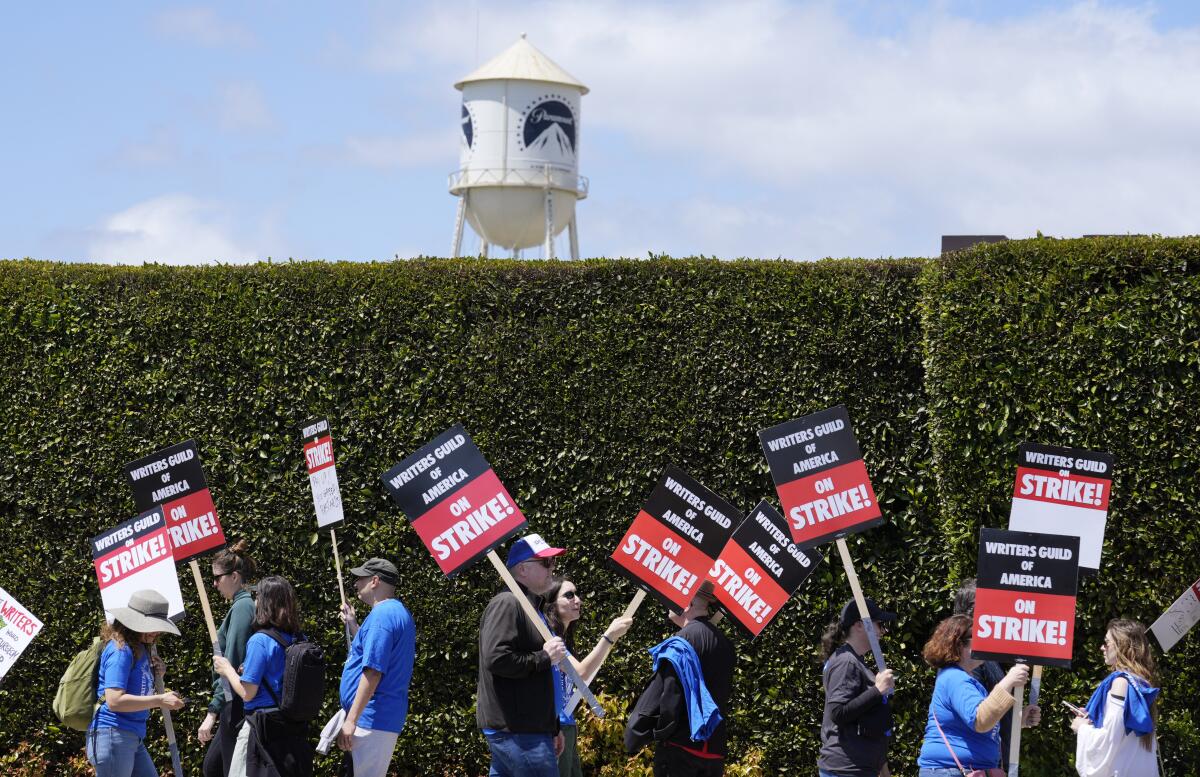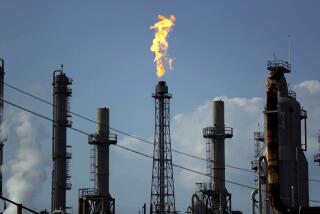Opinion: Employers can now sue unions over strikes. Here’s how that will intimidate workers

- Share via
The Supreme Court dealt a serious blow on Thursday to a core protection of workers, the right to strike. The court held that unions can be sued for the “foreseeable” damages their strikes cause employers — a sweeping threat to the federally protected right, because virtually all strikes (and employer lockouts) pose a “foreseeable” danger of harm. That’s why they are an effective and essential tool for labor.
The strike by graduate students at the University of California in 2022 meant that some students did not get their grades on time. The writers’ strike now going on in Hollywood will lead to economic harm to studios, caterers, actors and set-builders. Lockouts in professional sports have resulted in the cancellation of games and losses to players, TV networks and peanut vendors.
Now that the court has opened the door to holding unions liable for the economic consequences of their strikes, the question will be where the line will be drawn. Unfortunately, the justices give no answer to that question — and that uncertainty in itself will chill unions from exercising their federally protected right to strike.
The case decided Thursday, Glacier Northwest, Inc. vs. International Brotherhood of Teamsters Local Union No. 174, involved a strike by cement truck drivers. When the drivers went on strike, they returned the trucks to the employer and left the drums turning so the trucks would not be damaged. But because the employer had chosen not to exercise its right to hire replacement workers or use nonstriking workers to deliver and pour the concrete, the cement was ruined. Glacier Northwest sued the union for damages for the loss of the concrete. The Washington state Supreme Court ruled in favor of the union, rejecting liability for the “claims related to the loss of its concrete product because that loss was incidental to a strike arguably protected by federal law.”
But the Supreme Court reversed in an 8-1 decision, with the majority opinion written by Justice Amy Coney Barrett. The court stressed that the “drivers engaged in a sudden cessation of work that put Glacier’s property in foreseeable and imminent danger.” The court said that the drivers’ action ruined the concrete and risked harm to the trucks (downplaying the drivers’ efforts to ensure the trucks were not damaged). The union could be held liable because it “failed to take reasonable precautions to protect against this foreseeable and imminent danger.”
The central issue in the Glacier case was whether the National Labor Relations Act, which protects the right of employees to strike, precludes a state court from imposing liability on a union for the economic consequences of a strike.
The court’s new approach is inconsistent with the approach taken for more than half a century. In 1959, in San Diego Building Trades Council vs. Garmon, the Supreme Court ruled that state court proceedings should be paused to allow the National Labor Relations Board to determine whether the union’s conduct was, or was arguably, protected or prohibited by the National Labor Relations Act.
This approach makes sense because it allows an expert federal agency, vested with authority by Congress, to make the threshold determination of whether the strike is protected or prohibited by federal law. Indeed, the board is determining whether federal law protects the strike by these cement workers. But the Supreme Court did not follow the well-established procedure of allowing the National Labor Relations Board to make the initial determination. The court decided the issue for itself, concluding (based on its speculation that perhaps not every driver did enough to ensure the cement would not harden) that the strike was not even arguably protected by federal law. Congress enacted the National Labor Relations Act in 1935 precisely to prevent courts from deciding in this ad hoc way, based on untested employer allegations, that strikes violate some law.
When Congress passed that act, lawmakers knew strikes impose economic costs on employers. As Justice Ketanji Brown Jackson said in her dissent this week, “the threat of economic harm posed by the right to strike is a feature, not a bug, of the NLRA.” The threat of economic loss — to employers and to striking workers — is what causes the parties to negotiate a settlement. As she observed, “Unions leverage a strike’s economic harm (or the threat of it) into bargaining power, and then wield that power to demand improvement of employees’ wages and working conditions.”
The court’s new rule that unions can be held liable for “foreseeable and imminent danger” of economic harm is contrary to past cases that held unions could not be held liable when their strikes caused loss of perishable goods, such as poultry, milk and cheese. The court said those cases are different, but it failed to say why. The majority opinion also ignored the provision of the National Labor Relations Act stating that only healthcare workers must give advance notice of the day and time a strike will commence.
The National Labor Relations Act was intended to provide clarity and solid ground on which employees and employers could resolve their differences. With Thursday’s ruling, the justices have done the opposite, and workers will pay the price.
Erwin Chemerinsky is a contributing writer to Opinion and dean of the UC Berkeley School of Law. Catherine Fisk is a professor at the UC Berkeley School of Law.
More to Read
A cure for the common opinion
Get thought-provoking perspectives with our weekly newsletter.
You may occasionally receive promotional content from the Los Angeles Times.










